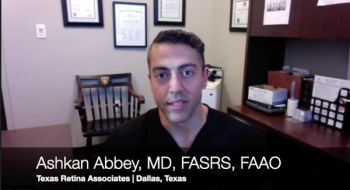
Technology identifies children at risk of vision disorders
A new visual screening process (PediaVision) is available to pediatricians and can take less than 5 seconds to complete and can assist in the detection of refractive errors, media opacities, and other abnormalities.
Key Points
Pardon the tongue-in-cheek, but heroics may be more germane to pediatrics than virtually any other branch of medicine. Given that premise, would pediatricians in your area be interested in an advance in early vision screening, widely hailed as the first line of defense in preventing blindness?
"I am a proponent of childhood, pre-verbal visual screening," said Robert Gold, MD, pediatric ophthalmologist, Eye Physicians of Central Florida, Orlando. "The message I really want to stress is that through early visual screening, pediatricians have the ability to be heroes by identifying children who are at risk of a number of vision disorders."
Visual screening can take many different forms. For many years, pediatricians have relied on fixation patterns or direct ophthalmoscopes to check reflexes and identify abnormalities such as cataracts.
"In today's world, there are new, faster, easier-to-use technologies that can help [pediatricians] save children's vision," Dr. Gold said.
One such technology is a new screening process (PediaVision), which can take less than 5 seconds to complete and which can assist in the detection of refractive errors, media opacities, and other abnormalities.
The system is non-invasive and combines auto-refraction and videoretinoscopy. The fully automated system conducts a comprehensive refractive assessment, analyzes the pupil size, creates a gaze deviation chart, and uses digital imaging for quick reference of more advanced issues.
A quick scan lasting as little as 5 seconds yields "pass" or "refer" results for myopia, hyperopia, anisometropia, astigmatism, and anisocoria.
The system consists of a handheld screener (complete with "smiley" face), a laptop computer and printer, automated vision assessment software and upgrades, and comprehensive technical support. It's designed to test children of all ages, starting as early as 6 months.
'Road testing' the system
Dr. Gold tested the system in his practice, albeit in an admittedly non-scientific manner.
"We basically tested every new patient who came into our practice over a month or so and looked at what the false-positive and false-negative rates were in our practice setting," he said. "Keep in mind that the patients we normally see are a little different from those a pediatrician will see, because the vast majority of the pediatricians' patients will have pretty normal eyes."
In his practice, Dr. Gold found a false-positive rate of about 15%. That rate compares with current procedures used by many pediatricians for which false-positive rates are "astronomical," he said. "That's why we decided to test this in our office and see if it would be an appropriate system and technology to speak to pediatricians about," he explained.
Talking with pediatricians about the importance of early vision screenings and the new technologies that are available to them to perform such screenings is what it's all about, according to Dr. Gold. "Ophthalmologists, especially pediatric ophthalmologists, must be the advocates of getting the word out into the pediatrician community," he said. "We have to be the marketers so they can be the heroes."
For more information about the system, visit
.
Newsletter
Don’t miss out—get Ophthalmology Times updates on the latest clinical advancements and expert interviews, straight to your inbox.





















































.png)


